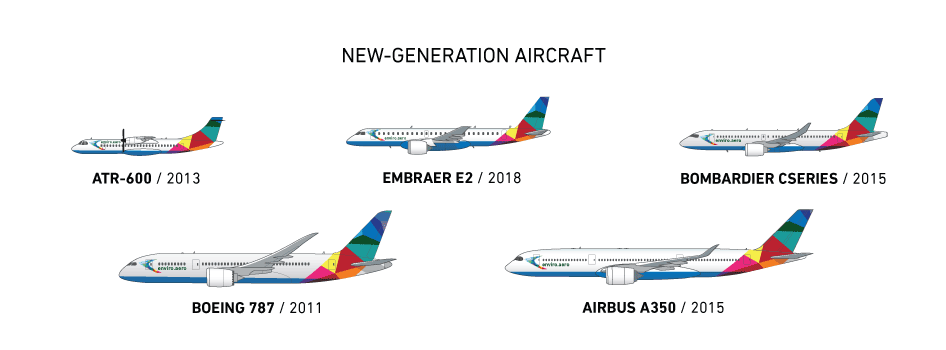The aviation industry has a track record of achieving the impossible
Before the Wright Brothers, few people believed powered flight was possible. This spirit of innovation has continued, and it is driving the industry’s response to its environmental challenges. For example:
- Aviation has been successful at decoupling emissions growth from actual growth. While air traffic is increasing at an average of 5% annually, CO2 emissions growth is now lower at around 3%
- Newer aircraft, like the Airbus A350 and Boeing 737MAX, consume on average less than three litres per 100 passenger kilometres. This fuel is comparable to that of compact cars, although aircraft travel much further and faster
- The next generation of aircraft will offer further improvements in fuel efficiency and emissions
- Turboprop aircraft like the Q400 and ATR series can provide a more fuel-efficient alternative to jet aircraft over shorter distances
Today, engineers and researchers are making incremental and frequent improvements that offer large savings overall. For instance, the wingtip devices airlines and manufacturers install on new aircraft increase aerodynamic efficiency and reduce fuel usage.
Manufacturers are increasingly using light-weight materials such as carbon composites to build aircraft and components. The Boeing 787 and 777X, Airbus A380, A220 and A350XWB aircraft all use these cutting-edge materials and technologies to deliver exceptional gains in environmental performance. Manufacturers of engines are also using highly advanced materials and processes such as additive layer manufacturing to develop new engines.
Technology on new aircraft can either improve fuel burn through aerodynamic efficiency (mainly airframe), or to reduce actual combustion use (mainly engine-related). Combined, these elements create a new aircraft with a reduced environmental impact.
Aircraft have a useful life of around 25-30 years, during which they will cover many millions of miles and carry millions of passengers or tonnes of cargo. Because of the long lead times for developing, designing and manufacturing modern aircraft, there tend to be ‘waves’ of new aircraft entering the fleet. We are currently in the middle of such a wave, with a number of new aircraft models coming into the system and replacing older, less fuel-efficient ones.
Electric aircraft
Although currently in the very early stages of research and development, aerospace manufacturers are investigating the introduction of fully electric and hybrid-electric aircraft.
As battery technology develops, increased energy storage may make electrically-powered commercial flight a reality. Already, several small-scale demonstrators are showing how it can be used for training flights and two-person operations.
In the short-term, electric propulsion is likely to be restricted to so-called ‘air taxi’ operations which are expected to start service in a small number of cities from around 2023-2025. These will provide 2-4 person commuter flights to avoid ground traffic congestion.
Longer term, several companies including Zunum and Wright Electric are developing more familiar commercial aircraft concepts. These would be regional jet sized, short-haul aircraft and could potentially be in service by around 2035, although more research is needed.
The quest to maximise range and payload (passengers or freight) while reducing the weight of the batteries and the energy density of stored electricity is a challenge. There is also a lot of research into hybrid options – combining the performance of liquid sustainable aviation fuel with the efficiency of electric propulsion. This may be an option for mid to long-range flights in future.


